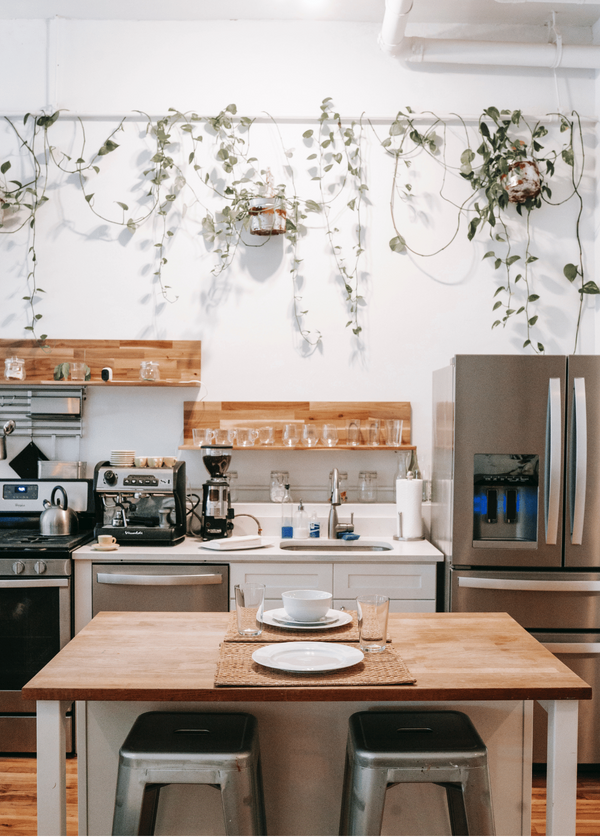The safety of your home and loved ones is a top priority. One of the most critical aspects of home safety is fire prevention and preparedness. Fires can strike unexpectedly, often originating in the most common areas of our homes. From the kitchen where cooking mishaps occur to the electrical system that powers our daily lives, these locations are often where fires begin.
But with the right precautions and proactive measures, you can protect your home and significantly reduce the risk ensuring a safer living environment. In this comprehensive guide, we will walk you through the necessary steps to analyze and enhance your home's fire safety. From smoke alarms to evacuation plans, we've got you covered.

Smoke Alarms: The First Line of Defense
Your home's early warning system against fire starts with smoke detectors. These devices can mean the difference between life and death in fire emergencies. Here's what you need to know:
- Install smoke alarms on every floor of your home, including the basement and attic if applicable.
- Place smoke alarms in every bedroom and outside sleeping areas.
- Test your smoke alarms monthly to ensure they are in working order.
- Change the batteries at least once a year or as soon as you hear the low battery warning.
- Replace smoke detectors every 10 years to ensure optimal performance.


Various Fire Extinguishers
Fire Extinguishers: Putting Out Small Flames Before They Spread
Having an extinguisher on each floor of the house is an important part of any home’s fire safety plan. Fire extinguishers come in different sizes and classes, so it's important to identify which type is best suited for your home.
Class A - typically best for residences as they are designed to combat fire caused by common combustibles like wood and paper.
Class B - are best for fires caused by flammable liquids, such as grease or gasoline.
Fire extinguishers are crucial tools for dealing with small fires before they escalate. Here's how to incorporate them into your fire safety plan:
- Install an extinguishers on every floor of your home, especially in the kitchen, garage, and near fireplaces.
- Choose the right type for each area. For instance, use a Class K extinguisher in the kitchen to combat cooking fires fueled by grease.
- Ensure all family members know how to use one properly. Remember the acronym PASS: Pull the pin, Aim at the base of the fire, Squeeze the handle, and Sweep from side to side.
It's also important to ensure that the fire extinguisher is properly charged, pressurized, and located in an easy-to-access location near an exit. Homeowners should familiarize themselves with how to use them in the event of an emergency and should also periodically check that it is still charged.
A fire extinguisher can help put out small fires quickly, so having one readily available on each floor of the house can be a lifesaver.
Here is a chart with the different classes of extinguishers:

Carbon Monoxide Alarms: Unseen Threats Detected

While we're vigilant about protecting our homes from visible threats like fires, there's an equally dangerous, invisible menace to contend with: carbon monoxide (CO). This odorless, colorless gas can seep into our homes from malfunctioning heating systems, gas appliances, or even car exhaust in an attached garage.
The danger lies in its silent intrusion, often going unnoticed until it's too late. That's where carbon monoxide alarms come into play. These devices are essential components of your home's safety plan, serving as sentinels against a potential silent killer. Much like smoke alarms, they provide early detection and warning, allowing you to take swift action to protect your family.
Here are some tips outlining how to install carbon monoxide alarms and where to place them in your home:
- Install at least one carbon monoxide alarm on each level of your home, including the basement, and near sleeping areas.
- Place alarms high on the wall or on the ceiling, as carbon monoxide tends to rise with warm air. Keep alarms away from vents, fans, and windows, as these areas may affect their accuracy.
- Do not install alarms in humid areas like bathrooms, as excessive moisture can impact their performance.
- Use the provided mounting hardware (screws and anchors) or follow manufacturer-recommended methods for installation.
- Test each carbon monoxide alarm monthly when checking your smoke alarms to verify that it's functioning correctly.
- Replace the batteries at least once a year, or when the low battery warning signal sounds.
- Replace the entire carbon monoxide alarm unit according to the manufacturer's recommended lifespan, typically every 5-7 years.
- Keep the alarms clean by gently vacuuming them using a soft brush attachment to remove dust and debris.
- Do not paint the alarms, as paint can affect their sensors and performance.
- If the carbon monoxide alarm activates and you suspect a CO leak, evacuate your home immediately. Call 911 or your local emergency services from outside your home to report the situation.
- Do not re-enter the building until it has been declared safe by emergency personnel.

Kitchen Safety: Preventing Cooking Fires
The kitchen is a common source of house fires due to cooking mishaps. See our detailed article on safety tips for kitchen fire safety.
Here is a quick review of steps to make your kitchen safer:
- Never leave cooking unattended, especially when using the stove or deep fryer.
- Keep flammable objects like towels and oven mitts away from the stovetop.
- Install a range hood with proper ventilation to remove smoke and fumes.
- Consider using a fire-resistant cooking apron and oven mitts.
- Keep a Class K fire extinguisher in the kitchen for grease fires.


Electrical Fires
Electrical Safety: Minimizing Fire Hazards
Electrical fires are a significant threat to homes. To reduce this risk, follow these electrical safety measures:
- Inspect your electrical system regularly for signs of wear, damage, or overheating.
- Replace damaged or frayed cords and wires immediately.
- Avoid overloading electrical outlets and use surge protectors when needed.
- Hire a licensed electrician for any electrical work or repairs.
- Keep space heaters away from flammable materials and never leave them unattended.


Woman by radiator with blanket and wood stove
Heating Safety: Staying Warm Safely
Heating equipment, including area heaters and fireplaces, can pose fire hazards if not used correctly. Here's how to stay warm safely and prevent fires:
- Have your chimney and heating equipment professionally inspected and cleaned annually.
- Use a sturdy screen or glass door in front of your fireplace to prevent sparks and embers from escaping.
- Keep combustible materials, such as curtains and furniture, at a safe distance from heaters and radiators.
- Turn off space heaters when leaving the room or going to bed.
- Use area heaters with automatic shutoff features for added safety.

Escape Plans: Getting Out Safely
In case of a fire, having a well-thought-out escape plan is essential for the safety of your family. Follow these steps to create an effective escape plan:
- Draw a floor plan of your home and mark all exits, including doors and windows.
- Establish a primary and secondary escape route for each room.
- Conduct regular fire drills with your family to practice evacuation.
- Choose a designated meeting place outside the home where everyone can gather after escaping.
- Teach children how to escape on their own if necessary and emphasize the importance of staying low to avoid smoke inhalation.

Fire-Resistant Building Materials: Building for Safety
When constructing or renovating your home, consider using fire-resistant materials to reduce fire risks:
- Use fire-resistant materials for the roof, such as asphalt shingles or metal roofing.
- Install fire-rated doors and windows to slow down the spread of flames.
- Opt for non-combustible siding materials like brick or stucco.
- Insulate your home with fire-retardant insulation materials.
-Enhance the safety of your home by creating a defensible space. Clear out any dead vegetation or flammable materials to minimize the risk of fire.
You can even consider fire-resistant plants in your landscaping plans or interior decorating.


Fire proof safes for valuables
Fire-Safe Storage: Protecting Valuables
Don't forget to safeguard important documents and valuables in case of a fire. Here's what you can do:
- Store important documents like birth certificates, passports, and insurance policies in a fire-resistant safe.
- Make digital copies of important documents and store them securely in the cloud or on an external hard drive.
- Consider purchasing fire-resistant storage containers for valuable items like jewelry and irreplaceable photos.

Home Security Systems: Integrated Protection
Modern home security systems can also enhance your fire safety. Look for these features:
- Smoke and heat detectors integrated into your security system.
- 24/7 monitoring by a professional security company.
- Mobile alerts to notify you of potential fire hazards, even when you're not at home.
- Panic buttons to quickly summon emergency assistance in case of a fire or other emergencies.

Fire safety should never be taken lightly. By following these steps and integrating them into your daily life, you can significantly reduce the risk of fires and ensure your home is a safe haven for you and your loved ones. Remember, preparedness is the key to preventing and surviving a fire emergency. Stay vigilant, stay safe, and protect what matters most.
If you want to do more research, here is a link to the National Fire Protection Association that stands ready to help you: https://www.nfpa. Also, here is a link to a printable copy of a Home Fire Safety Checklist: Safety Checklist.pdf
Thanks for reading our article on making and keeping your home as safe as possible from fire! We also have another great article on kitchen safety in general in addition to the article referenced earlier on keeping your kitchen safe from fire.
If you're looking for fire extinguishers for your kitchen or your home, check out our review articles below:


Thanks for stopping by our bee hive!

Bertie
Before you leave, if you haven't already done so, please subscribe so you will be the first to see reviews you can rely on.










Member discussion